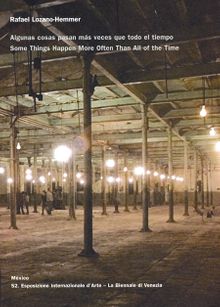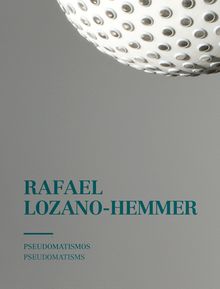ARTIST MONOGRAPHS
|
|
STATUS: Out of print | 00/00/00 For assistance locating a copy, please see our list of recommended out of print specialists |
 Rafael Lozano-Hemmer: Some Things Happen More Often Than All of the Time
Rafael Lozano-Hemmer: Some Things Happen More Often Than All of the Time
Published by Turner/A&R Press.
Introduction by Patricia Espinosa, Sergio Vela, María Teresa Franco, Aimée Servitje, Viviana Kuri. Text by José Luis Barrios, Manuel DeLanda, Barbara London, Príamo Lozada, Cuauhtémoc Medina, Victor Stoichitas, Bárbara Perea.
PUBLISHER
Turner/A&R Press
BOOK FORMAT
Hardback, 7.5 x 10 in. / 176 pgs / 48 color / 9 bw.
PUBLISHING STATUS
Pub Date 12/15/2007
Out of print
DISTRIBUTION
D.A.P. Exclusive
Catalog: SPRING 2008 p. 145
PRODUCT DETAILS
ISBN 9788475067926 TRADE
List Price: $34.00 CAD $45.00
AVAILABILITY
Not available
STATUS: Out of print | 00/00/00 For assistance locating a copy, please see our list of recommended out of print specialists |

